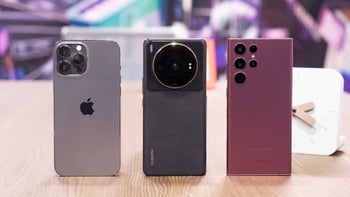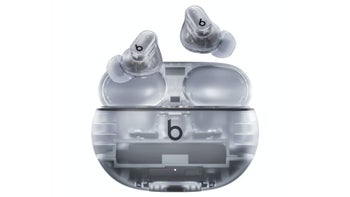Xiaomi 12S Ultra vs iPhone 13 Pro Max vs Galaxy S22 Ultra: Camera comparison

You realize that smartphone innovation has hit a wall when people start obsessing about small software features with names taken from your elementary school geography classes. Believe it or not, most modern smartphones look similar, feel similar, and they largely do the same thing (of course there are exceptions to this rule but I think you understand the gist of it).
But let’s leave all this negativity and focus on the big smartphone innovation driver - the camera! This area is still moving fast between generations, maybe because there is still room for improvement. Manufacturers still strive to put the largest sensor, the best optics and develop the most advanced algorithms to provide you with the opportunity to snap that perfect picture during your regular trip to Taco Bell (thanks, Instagram).
During our limited time with the Xiaomi 12S Ultra we also managed to snap some comparison shots with the iPhone 13 Pro Max and the Galaxy S22 Ultra (thanks to our training in joggling). Today we’re going to present you these images head to head, so you can judge somewhat objectively the new 1-inch sensor. Here we go!
Read More:
Xiaomi 12S Ultra hands-on preview
iPhone 13 Pro Max review
Galaxy S22 Ultra review
Here’s a little table comparing the camera specs of all three contenders in today’s shootout
But all jokes aside, smartphone camera systems do evolve at rapid rates, and the most current example is the Xiaomi 12S Ultra. We did a short hands-on preview of this interesting Chinese flagship, sporting Sony’s new IMX989 sensor, engineered specifically for smartphones. But what are a few snapshots without some reference, right?
Read More:
Xiaomi 12S Ultra hands-on preview
iPhone 13 Pro Max review
Galaxy S22 Ultra review
Here’s a little table comparing the camera specs of all three contenders in today’s shootout
| Xiaomi 12S Ultra | Apple iPhone 13 Pro Max | Samsung Galaxy S22 Ultra | |
|---|---|---|---|
| Main camera | 50MP, 23mm, f/1.9 (1-inch IMX989 sensor) | 12MP, 26mm, f/1.5 | 108MP, 23mm, f/1.8 |
| Ultra-wide | 48MP, 13mm, f/2.2 | 12MP, 13mm, f/1.8 | 12MP, 13mm, f/2.2 |
| Telephoto | 48MP, 120mm (5.2X), f/4.1 | 12MP, 3X zoom, f/2.8 | 10MP, 3X zoom, f/2.4 10MP, 10X zoom, f/4.9 |
| Front | 20MP | 12MP | 40MP |
You can't tell much from camera specs alone, these days computational photography is king, so it's down to post processing algorithms most of the time. What we can tell is that apart from the megapixel count, the ultrawide cameras of all three phones should yield similar results, at least in regard to the field of view. The new Sony sensor should have an advantage on paper but again it's down to what is happening with the raw information from that 1-inch sensor after you take the shot. The Galaxy S22 Ultra should be the telephoto champion with it's 10x periscope zoom lens but the Xiaomi 12S Ultra also features a periscope system, albeit with half the zoom equivalent.
Xiaomi 12S Ultra vs iPhone 13 Pro Max vs Galaxy S22 Ultra: Main
When we're talking about how certain images look it's for the most part subjective (as our blind camera comparisons have shown time and again) but there are a few areas where conclusions can be drawn. All three phones shoot great photos, no doubt about it, but it seems Samsung is doing a better job with algorithms, while photos from the iPhone look warmer. The new 1-inch sensor in the Xiaomi 12S Ultra seems to offer a lot of sharpness, detail and clarity but it tends to overexpose certain areas while underexposing others. It's also on the colder side, tone wise.
Looking at the sky and clouds in these samples it seems that the iPhone 13 Pro Max is able to resolve the most details of the bunch. Again, judging photos is pretty subjective, so we'll leave it to your and your eyes to be the final judge.
Xiaomi 12S Ultra vs iPhone 13 Pro Max vs Galaxy S22 Ultra: Ultrawide
The ultrawide cameras are quite similar so we should expect similar results from those three. Actually, the iPhone 13 Pro Max uses a Sony sensor as well (IMX772 vs the IMX586 in the Xiaomi), while the Galaxy sports the in-house developed ISOCELL sensor.
The results are indeed pretty similar, with the Galaxy S22 Ultra again scoring high in dynamic range and detail. All three phones again shoot pretty decent photos, and the tonality is one of the biggest differences - the Xiaomi 12S Ultra produces colder images overall.
Xiaomi 12S Ultra vs iPhone 13 Pro Max vs Galaxy S22 Ultra: Telephoto
Moving to the telephoto category we obviously had to settle with the 3x zoom camera of the Galaxy S22 Ultra for comparison purposes. It's absolutely clear that the Samsung flagship obliterates the competition when it comes to zoom range but let's check out how it performs at lower zoom levels. All three phones use Sony-made sensors for their respective telephoto cameras as well (IMX754 on the S22 Ultra, IMX713 on the 13 Pro Max, and IMX586 on the Xiaomi 12S Ultra).
The telephoto comparison is a bit off, due to the different zoom equivalents, and it's clear to see that in that particular case the Xiaomi 12S has an advantage (at least regarding the zoom level). The Galaxy S22 Ultra also takes decent shots with lots of detail and again a better dynamic range than the other two.
Xiaomi 12S Ultra vs iPhone 13 Pro Max vs Galaxy S22 Ultra: Portrait/Selfie
The front (or so-called selfie) camera is very important for a great number of people out there, and we get it. It's not only vanity, it's content creation, video chat and so on and so forth. All three phones perform well enough in this category, with the selfie shot from the Xiaomi 12S being the most natural in our opinion in regard to lighting and tonality.
All three phones of course sport a dedicated Portrait mode in their camera apps, and it works as advertised. Blurring the background uses a mix of the optic characteristics of the camera (wide aperture, focal length), and software algorithms. You can clearly see that the iPhone blurs the background much more aggressively, and the Galaxy is not far behind. The Xiaomi 12S on the other hand maintains the focal differences between object closer on the background and those farther back. A much more pleasant and natural effect, at least in our opinion.
It's worth noting that Portrait mode has many settings to tweak normally, and most of the time you can get a result to your liking (excluding the most radical cases where blurring creates artifacts). The sample shots above were taking using the default settings.
Xiaomi 12S Ultra vs iPhone 13 Pro Max vs Galaxy S22 Ultra: Low-light
Low-light photography is another strong area where smartphones and their software algorithms sometimes outperform even professional equipment. We expected more from the 1-inch sensor in the Xiaomi 12S Ultra with its crazy pixel binning making pixel size of 3.2 microns but again, Samsung is doing a better job in brightening the photos and resolving details. Truth be told, the images from the Xiaomi 12S Ultra look closest to what we were seeing with our naked eyes, so there's also that.
Conclusion
This little camera comparison once again proves that we live in the era of computational photography. Not that the 1-inch Sony sensor inside the Xiaomi 12S is lagging behind, quite on the contrary - it has great potential. It's just that the software algorithms behind the camera systems of the iPhone 13 Pro Max and Galaxy S22 Ultra are a tad more advanced. Which means that we should expect even better results when the IMX989 finds its way into more devices, because the hardware potential is clearly there.













Things that are NOT allowed: